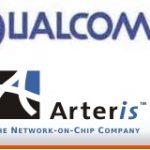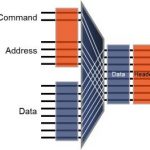You are currently viewing SemiWiki as a guest which gives you limited access to the site. To view blog comments and experience other SemiWiki features you must be a registered member. Registration is fast, simple, and absolutely free so please,
join our community today!
WP_Term Object
(
[term_id] => 497
[name] => Arteris
[slug] => arteris
[term_group] => 0
[term_taxonomy_id] => 497
[taxonomy] => category
[description] =>
[parent] => 178
[count] => 156
[filter] => raw
[cat_ID] => 497
[category_count] => 156
[category_description] =>
[cat_name] => Arteris
[category_nicename] => arteris
[category_parent] => 178
[is_post] =>
)

WP_Term Object
(
[term_id] => 497
[name] => Arteris
[slug] => arteris
[term_group] => 0
[term_taxonomy_id] => 497
[taxonomy] => category
[description] =>
[parent] => 178
[count] => 156
[filter] => raw
[cat_ID] => 497
[category_count] => 156
[category_description] =>
[cat_name] => Arteris
[category_nicename] => arteris
[category_parent] => 178
[is_post] =>
)
I blame it on Henry Ford, William Levitt, and the NY State Board of Regents, among others. We went through a phase with this irresistible urge to stamp out blocks of sameness, creating mass produced clones of everything from cars to houses to students.
Thank goodness, that’s pretty much over. The thinking of simplifying system design… Read More
Arteris finally announced this morning, as rumored, that Qualcomm is acquiring “certain technology assets” and hired personnel formerly employed by Arteris. The financial terms were not disclosed.
I talked to Charlie Janac, the CEO, today. The first thing I asked him is why such a convoluted deal, I’ve never… Read More
Qualcomm Arteris dealby Eric Esteve on 10-31-2013 at 10:32 amCategories: Arteris, IP
Is it really a surprise if Qualcomm, the undisputed leader of Application Processor (AP) and BaseBand (BB) IC for wireless mobile, already one of the Arteris investors (with ARM, Synopsys, Docomo Capital and a bunch of VC), eventually acquires the best NoC IP technology (the technology, the engineering team and the rights, but… Read More
We still don’t know the precise status about a potential acquisition of Arteris by Qualcomm, and I prefer not to comment a rumor and wait for the official announcement, if any. But I would like to comment … a comment about this rumor, recently made by Sonics. This comment has taken the form of an Open Letter, from “Grant Pierce, CEO of… Read More
I just read this very interesting article posted by Kurt Shuler from Arteris, describing the “History of SoC Interconnect Fabric” and explaining why the SC industry needs an advanced approach, named the “fourth phase of the Interconnect Fabric history” in the article. Kurt’s point of view is that in the past the SoC interconnect… Read More
The news from Arteris, Inc., announcing that “its interconnect fabric IP has been licensed and deployed in a majority of chips developed by China’s leading semiconductor companies for applications including consumer electronics, smartphones, and tablets,” is holding attention for several reasons. At first, because it’s… Read More
Application Processor SoC integrates more and more functions, generation after generation, challenging performance, cost, power efficiency, reliability, and time-to-market. But the maximum die size can’t increase, at least because of the constraints linked with wafer production, manufacturability, yield and finally… Read More
Virtual platforms enable software development to take place on a model of an electronic system. What everyone would like is models that are fast and accurate but that is simply not possible. Fast models are fast because they don’t model everything at the signal level. And accurate models get to be accurate by handling a lot of detail… Read More
I have mentioned NoC adoption explosion during the last two years, illustrated by the huge revenue growth of Arteris. This trend is now confirmed in the fastest moving segments, the Application Processors (AP) and LTE Modem for mobile applications. In fact, Arteris FlexNoC has been integrated in the majority of AP and LTE Modem… Read More
I just read three very interesting blogs from Arteris. In the first “The Semiconductor Industry Needs an IP Switzerland”, Kurt Shuler, VP of Marketing for Arteris, enjoys about the fact that four big IP players (ARM, Synopsys, Imagination and Cadence) are emerging after years of fragmentation within the semiconductor IP industry.… Read More










